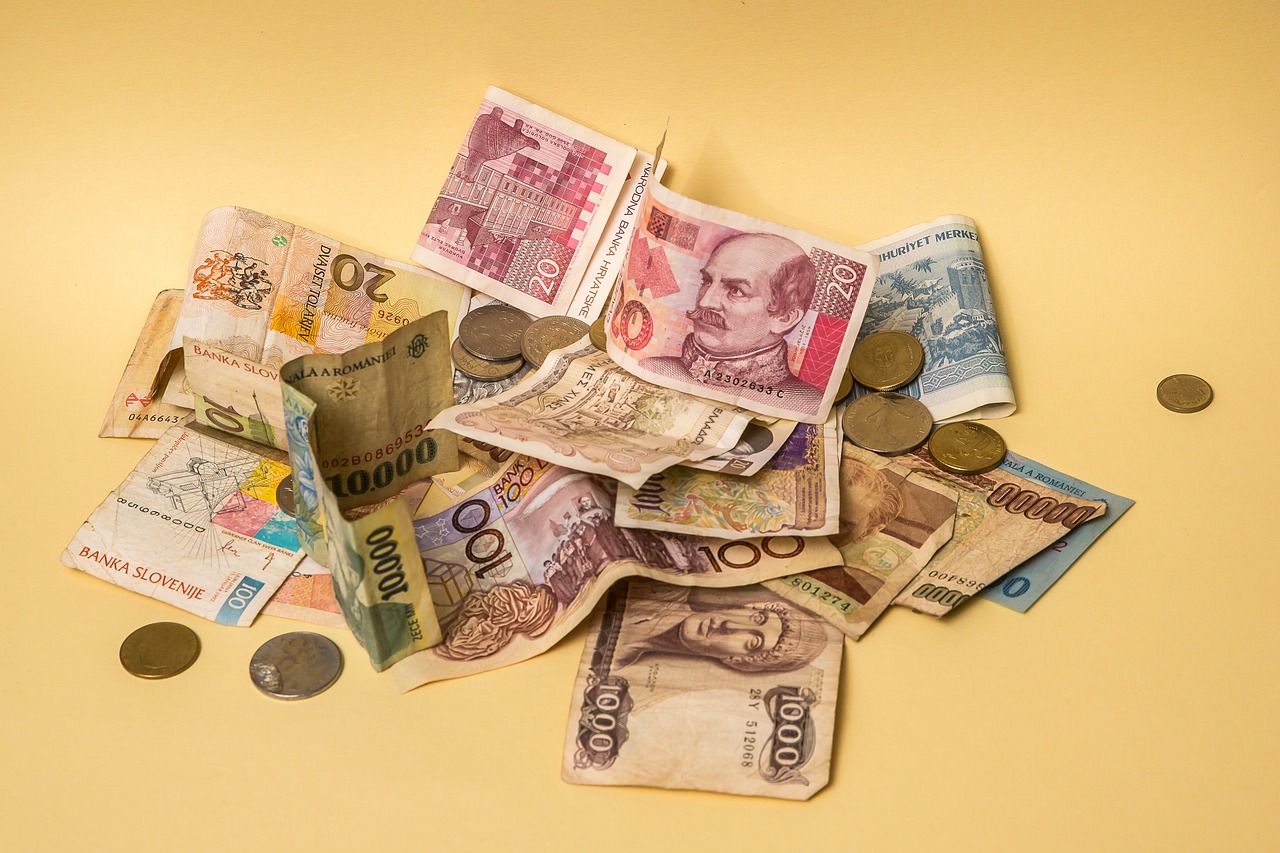Unleashing the Power of International Money Transfers: Answers to Common Questions About Sending Money to the Philippines!
GPT_Global - 2024-05-19 12:30:05.0 538
Are there any limits on the amount of money I can send to the Philippines?
When it comes to sending money to the Philippines, there are certain limits that you need to be aware of. These limits are set in place by the Bangko Sentral ng Pilipinas (BSP), the central bank of the Philippines, to regulate and monitor the flow of remittances to the country.
The first limit to take note of is the maximum amount of money that can be sent in a single transaction. According to the BSP, the maximum amount for individual transactions should not exceed USD 50,000 or its equivalent in other currencies. This means that if you need to send more than USD 50,000, you may need to split the amount into multiple transactions.
Another limit to keep in mind is the monthly limit for remittances. The BSP has set a maximum monthly limit of USD 10,000 for individuals. This means that regardless of how many transactions you make in a month, the total amount should not go over USD 10,000. This limit is in place to prevent any potential illegal activities such as money laundering.
Aside from these limits, you should also be aware of any potential fees and charges that may apply when sending money to the Philippines. These fees may vary depending on the remittance service provider you choose, as well as the amount and method of the transfer.
It is important to always check with your chosen remittance provider for their specific limits and fees before making a transaction. This will ensure that your money is transferred safely and efficiently without any unexpected costs or delays.
In conclusion, while there are limits on the amount of money that can be sent to the Philippines, it is still a convenient and reliable way to support your loved ones back home. By staying informed and working with a trusted remittance provider, you can easily navigate these limits and continue sending money to the Philippines with ease.

Will the recipient have to pay any fees to receive the money in the Philippines?
Sending money to loved ones in the Philippines can be a great way to support them and stay connected, especially during these difficult times. However, before making any remittance transactions, it's important to understand if the recipient will have to pay any fees to receive the money.
The answer to this question can vary depending on the remittance service provider you use and the method of transfer. Some companies may charge additional fees for currency conversion, while others may have lower fees for bank transfers compared to cash pick-up. It is crucial to research and compare different providers to find the most cost-effective option for both you and your recipient.
In addition to fees, it's also essential to consider the exchange rate offered by the remittance company. A higher exchange rate means more money received by the recipient, so it's worth comparing rates among different providers.
Moreover, it's vital to make sure that the recipient has all the necessary documents and information to receive the funds. This may include a valid government-issued ID, tracking number, and proof of origin of the funds. These requirements ensure the safety and legality of the transaction and may also affect any additional fees.
Lastly, it's crucial to communicate with the recipient about potential fees and the exact amount they will receive. This will help them better manage their expectations and avoid any surprises upon receiving the money. Furthermore, informing them of the expected delivery timeline can also be helpful, as some providers offer instant transfers for a higher fee.
In conclusion, understanding potential fees and charges associated with remittance transactions can help you make an informed decision when sending money to the Philippines. By researching different providers, comparing exchange rates, and communicating with the recipient, you can ensure that your loved ones will receive the full amount intended to support them. Choose a reliable and transparent remittance service that offers competitive rates and minimal fees to make the most out of your remittance.
Can I cancel a money transfer to the Philippines?
Yes, you can cancel a money transfer to the Philippines. However, the process and conditions for cancellation may vary depending on the remittance service provider you used. It is always best to check with your chosen provider for their specific cancellation policies.
If you decide to cancel a money transfer, it is important to do so as soon as possible. Once the funds have been sent and received by the recipient in the Philippines, it may be difficult to cancel the transaction. This is why it is crucial to double-check all information before making a transfer, and to only send money to trusted individuals.
In case you need to cancel a money transfer, you will typically need to contact the remittance company's customer service hotline or visit their nearest branch. You may also need to provide your transaction details such as the sender's name, recipient's name, transaction number, and amount sent.
Some remittance companies may charge a fee for cancelling a money transfer. This fee may vary depending on the amount sent, the currency exchange rate at the time of cancellation, and other factors. It is important to check with your provider beforehand if there are any cancellation fees.
Additionally, some remittance companies may only allow cancellations if the recipient has not yet claimed the money. If the money has already been picked up by the recipient, it may be more difficult to cancel the transaction. Again, it is important to contact your provider as soon as possible if you need to cancel a money transfer.
In summary, cancelling a money transfer to the Philippines is possible, but it is important to act quickly and check with your provider for their specific policies. It is also wise to double-check all information before making a transfer to avoid any issues or additional fees.
How long does it take for the money to reach the recipient in the Philippines?
Remittance or money transfer to the Philippines is a common practice for those living and working abroad. With the advancements in technology, sending money has become easier and more convenient. But one question that often comes to mind when sending money to the Philippines is, "how long does it take for the money to reach the recipient?"
The answer to this question varies depending on the remittance service provider and the mode of transfer chosen. For example, if you are using an online remittance platform, the money can reach the recipient within minutes if sent during business hours. However, if you choose to send the money through a bank transfer, it may take 1-3 business days for the money to reflect in the recipient's account.
Another factor that affects the time it takes for the money to reach the recipient is the location of the sender and receiver. If the sender and recipient are in different time zones, it may cause a delay in the transfer process. Therefore, it is essential to factor in the time difference when sending money to the Philippines.
The speed of the transfer also depends on the remittance company's network and partnerships. Some companies have a wide network of banks, agents, and cash pick-up locations in the Philippines, making the transfer faster. However, if the company has limited partners, it may take longer for the money to reach the recipient.
If you need the money to reach the recipient quickly, you can also opt for an express or urgent transfer, which may come with an additional fee but guarantees a faster delivery time. Additionally, some remittance companies offer a tracking system where you can monitor the status of your transfer and know exactly when the money reaches the recipient.
In conclusion, the time it takes for the money to reach the recipient in the Philippines depends on various factors such as the type of transfer, location, and remittance company's network. To ensure a timely transfer, it is essential to research and compare different remittance options and choose the one that best suits your needs.
Are there any taxes or duties applied when sending money to the Philippines?
Remittance, or the process of sending money to another country, is a common practice for many Filipinos who have loved ones abroad. This allows them to support their families back home and also contributes to the growth of the Philippine economy. However, before sending money, it is important to understand if there are any taxes or duties applied that may affect the remittance process.
When sending money to the Philippines, there are several taxes and duties that may be applied. The most common is the service fee charged by remittance companies for facilitating the transfer. This fee can vary depending on the amount being sent and the chosen method of transfer, but it is typically a small percentage of the total amount.
Another tax to consider is the foreign exchange conversion fee. This applies when the currency of the sender's country is different from the Philippine peso. The exchange rate used by remittance companies may also include a markup, so it is important to compare rates between different providers to get the best value for your money.
In some cases, there may also be taxes or duties applied by the government of the receiving country. For example, if the sender is based in the United States, they may be subject to the Foreign Account Tax Compliance Act (FATCA), which requires them to report any transfers over a certain amount to the US government.
It is important to note that these taxes and duties may not apply to all remittances. In some cases, there are exemptions or special arrangements in place between countries that waive these fees. It is advisable to check with the specific remittance company and the relevant government agencies to understand the exact charges that may apply to your transfer.
In conclusion, while there may be taxes and duties involved when sending money to the Philippines, they are usually minimal and necessary for the smooth and secure transfer of funds. It is important to research and compare different remittance options to ensure that you are getting the best deal for your money. By doing so, you can continue to support your loved ones back home while also contributing to the growth of the Philippine economy.
About Panda Remit
Panda Remit is committed to providing global users with more convenient, safe, reliable, and affordable online cross-border remittance services。
International remittance services from more than 30 countries/regions around the world are now available: including Japan, Hong Kong, Europe, the United States, Australia, and other markets, and are recognized and trusted by millions of users around the world.
Visit Panda Remit Official Website or Download PandaRemit App, to learn more about remittance info.



